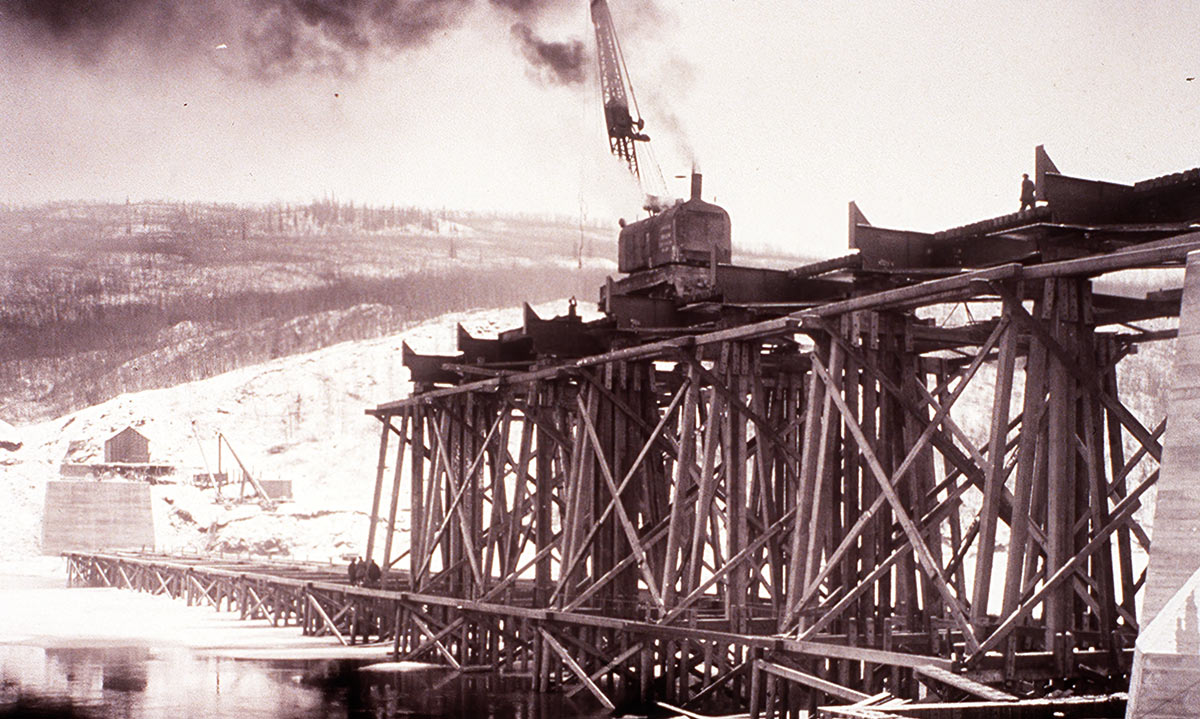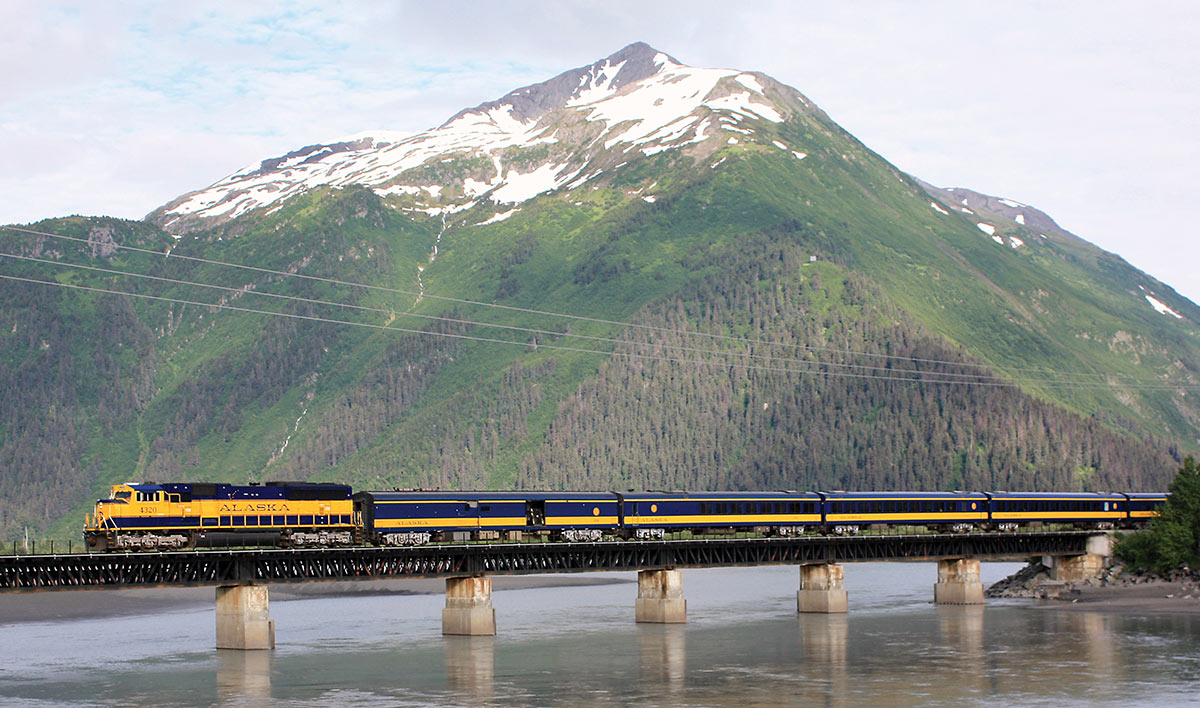


he blue and yellow Alaska Railroad Corporation, or ARRC, locomotives symbolize Alaskans’ tenacious, hardworking, and ingenious spirit. From its humble beginning in 1903 as Alaska Central Railway, ARRC quickly became key in transporting passengers and freight across Alaska’s vast landscape.
ARRC locomotives and railcars traverse Alaska regularly, adding daily wear and tear to much of the corporation’s infrastructure, which in turn means consistent maintenance. And though ARRC has an internal team that handles many repairs, the yearly workload means ARRC needs additional support from outside contractors.
ARRC Chief Operating Officer Clark Hopp says the railroad keeps a working list of capital projects that are annually reviewed and prioritized. The capital committee reviews all project requests prior to financial allocations. Once an annual budget is set, the railroad can determine how to divide the money between system, equipment, and construction needs.
Not all construction projects automatically go out to bid. Hopp says ARRC has a talented workforce that includes internal bridge crews that undertake projects suited to their skill set. However, if internal teams are already assigned to another project, or the project is large and logistically difficult, ARRC will look for an external contractor to complete the work.
“We always look first at internal resources, identify what we do well, and feed that,” says Hopp. “However, there are always a large number of projects every year, so we rely on multiple in-state contractors to help out.”
ARRC bids out between five and ten construction projects each year that are larger in size and scope. Brian Lindamood, ARRC vice president and chief engineer, says railroad projects often require ingenuity and creative solutions. Since railroad closures aren’t an option and the track system doesn’t have a bypass, construction crews often work in a tight timeframe to keep the trains running.
“Construction crews don’t have the luxury of time,” Lindamood says. “Sometimes they have as little as 36 hours to complete a piece of the project, especially in the summer when the heavy passenger trains are running.”
The total ARRC capital budget for 2023 is $74 million, with projections suggesting an increase in allocations through 2028. Hopp estimates ARRC will spend around $500 million on capital projects in the next five years.

Swalling General Contractors’ founder Al Swalling worked on railroad projects even before starting the company in 1947. The family-owned business maintained a working relationship with ARRC, even as different owners managed operations.
Both HDR and Swalling have completed more than 100 projects for ARRC, many with difficult logistics. Brian Van Abel, co-owner of Swalling, says accessibility to project sites is often challenging, as he learned during his first ARRC project in 2017: the company needed to replace the existing pier structure supporting a three-span, 482-foot MP 370.7 bridge constructed in 1925 while protecting the surrounding embankment. Though the bridges were only ten miles from the city of Nenana, they crossed the extremely cold and swift Nenana River, where Swalling crews worked year-round to complete the project while the train continued operation.
“There’s a huge safety component with logistically difficult projects,” says Van Abel. “Small things can have a big effect on high-speed locomotives.”
Katherine Wood, HDR’s Alaska business development lead, says mitigating these challenges requires a proactive approach. In many cases, contractors will use the construction manager/general contractor alternative delivery method for logistically difficult projects because it allows the contractor to come on board during the design phase and provide input on items such as constructability and access challenges.
“Unlike a roadway, which may have alternate detour routes available or the ability to restrict lanes during construction, the railroad only has one way to get between different sections of their service area,” says Wood. “And, because ARRC is self-sustaining, our designs must be cost-effective to make their funding stretch as far as possible.”

“The Alaska Railroad’s diverse services are valuable to the construction industry,” says Amberg. “By providing efficient freight transportation, logistical support, and access to remote areas, the Alaska Railroad facilitates the movement of construction materials, equipment, and personnel. This accessibility significantly reduces construction costs and timelines, improving project efficiency.”
Likewise, Amberg says ARRC’s cooperation in coordinating shipments and logistics ensures streamlined operations by reducing potential delays and maximizing construction efficiency. As a result, AGC of Alaska members greatly value and rely on ARRC to deliver successful projects for their clients
and communities.
“The railroad’s passenger services promote tourism and workforce mobility, attracting skilled labor and potential investments in construction projects,” says Amberg. “Overall, the Alaska Railroad’s services play a pivotal role in the construction industry’s growth and sustainability throughout the region.”